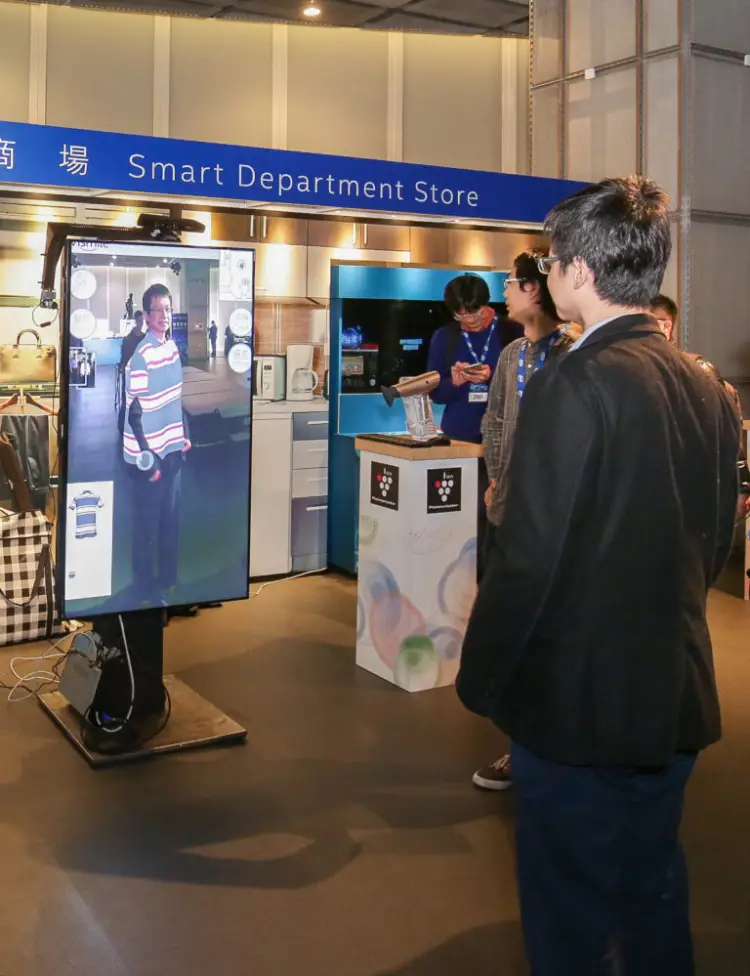
Intel and Foxconn have demonstrated use cases for AI facial recognition cashless payment technology using 5G-ready applications.
A new collaboration between Intel Corp, Hon Hai Precision (Foxconn) and Asia Pacific Telecom (APT) sees the launch of a multi-access edge computing (MEC) platform which can process payments in just 0.03 seconds.
At a demonstration, Intel revealed residential access control, facial-recognition retailing, a virtual shopping service, a pay-via-face identification entertainment service using advanced facial recognition technology and artificial intelligence (AI) based on MEC. The MEC system would work using servers deployed in multiple locations and remotely monitored by a centralised MEC Controller.
Smart retail environments could benefit from the fintech in just over a year, the Bluechips said. Office access control is likely to be another viable use case, allowing employers to accurately track employee attendance and hours worked. Further uses would be in residential scenarios, at virtual shopping malls, auto-adjusting traffic lights and identification of missing people.

Facial recognition would make transactions more secure and reduce the possibility of fraud, Intel said.
“This reduces the risk of personal information leakage and credit card fraud. Facial recognition is expected to be introduced to a variety of industries as the means of payment authentication, without the need of cash or credit cards,” said Intel.
“The MEC solution is developed from the integration of Intel’s Network Edge Virtualization (NEV) SDK with open-source software DPDK (Data Plane Development Kit) which together provide the 5G high-speed connectivity by delivering edge computing capability.”
Intel expect to begin selling its first 5G New Radio (5G NR) modem suite, the XMM 8060, from mid-2019. The XMM 8060 will have multi-modal functionality capable of supporting standalone (SA) and non-standalone (NSA) 5G set-ups as well as millimetre-wave (mmWave), sub-6GHz spectrum bands and legacy mobile networks.

“Wireless cameras can connect to the internet via small cell radio access nodes offered by Asia Pacific Telecom and transmit the captured image to the facial-recognition engine to be processed on the local MEC platform,” Foxconn Technology Group corporate executive VP and Asia Pacific Telecom chair Fang-Ming Lu said.
“The low-latency, high-speed computing and assessment capability allows the system to deliver the computing result in real time to achieve premium customer experience.”
In September, Intel showcased its third-generation 5G Mobile Trial Platform which will enable device optimisation through initial 5G NR specifications in live tests before 2018.
The tech is powered by Intel’s field-programmable gate array (FGPA) circuits and Core i7 processors, supporting the 600-900MHz, 3.3-4.2GHz, 4.4-4.9GHz, 5.1-5.9GHz, 28GHz, and 39GHz spectrum bands with mobile interoperability for end-to-end 5G field testing.
IBM unveils ‘game-changing powerhouse’ for AI
Telefónica, Juniper boost self-driving platform with AI, Machine Learning
IoT retail revolution opens doors for change
The cashless payment system follows recent developments in facial identification from Facebook, Apple and Samsung – the latter two systems having already been unlocked using simple photo printing.
Last month, Intel released details of its 5G security drone and cameras with facial recognition tech capable of transmitting footage to a central security hub during the PyeongChang 2018 Winter Olympics. In January, Intel and ZTE revealed breakthrough research in rapid facial recognition using deep learning and neural networks.






